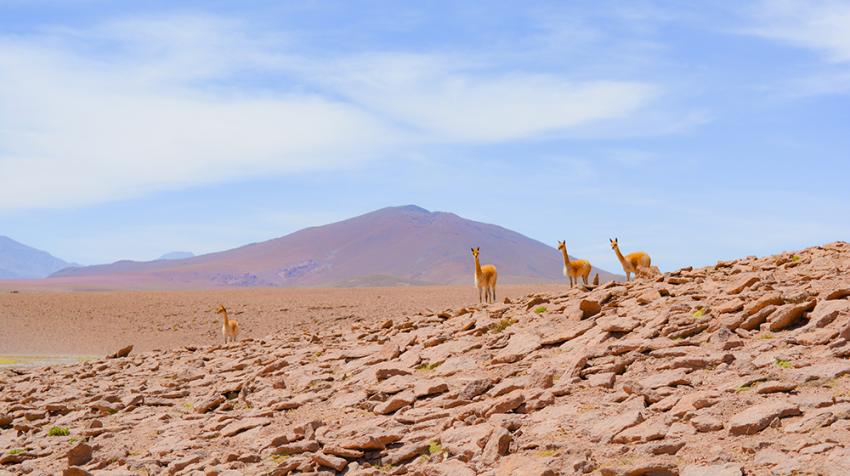As evidence of a largely human-driven crisis of biodiversity loss grows, it may seem as though sustainable development cannot include wildlife conservation. But the work of the Convention on International Trade in Endangered Species of Wild Fauna and Flora (CITES) and other major wildlife and biodiversity conventions shows that implementing a global framework for conservation can yield results for human development.
You could be forgiven for thinking that the conservation of wildlife, habitats and ecosystems, and the achievement of the United Nations Sustainable Development Goals (SDGs) are difficult to reconcile.
After all, some SDGs, such as Goals 14 (Life Below Water) or 15 (Life on Land) do call for the conservation of these ecosystems and their components. Others, such as Goal 1 (No Poverty), call for the economic advancement of all humankind, which will inevitably require the use of wildlife, including wild animals, such as fish and reptiles, as well as plant-based products, such as timber and medicinal plants.
Recent research has painted a dire picture of the state of the world’s wildlife and biodiversity resulting from human activities. The 2019 Global Assessment Report on Biodiversity and Ecosystem Services, published by the Intergovernmental Science-Policy Platform on Biodiversity and Ecosystem Services (IPBES), is clear: close to a million species—a quarter of all known lifeforms—could face extinction in a matter of decades as a direct result of human overexploitation, climate change and habitat degradation. The World Economic Forum’s 2020 Global Risks Report also ranks biodiversity loss and ecosystem collapse as one of the top five threats humanity will face in the next ten years.
Since ancient times, human societies and economies have relied on biodiversity in fundamental ways. By way of example, countless species of wild fauna and flora are used by people around the world in their daily lives for food and in the manufacture of health care products, furniture, housing, tourist souvenirs, cosmetics and clothing.
The Parties to the Convention on the International Trade in Endangered Species of Wild Fauna and Flora (CITES) are aware of the importance of ensuring that the use of wildlife for international commercial trade is sustainable, legal and traceable for people, prosperity and planet.
CITES remains one of the world's most powerful tools for wildlife conservation through the regulation of international trade.
Through the cooperative involvement of governments, international organizations, local and international civil society groups and communities, as well as private sector actors, a framework has been built in which the regulated use of wildlife and their habitats supports both conservation and human well-being, thus contributing to the achievement of the SDGs, particularly Goals 1, 14 and 15 and also Goal 12 (Ensure sustainable consumption and production patterns).
Linking conservation, sustainable livelihoods and national economies
CITES is the oldest multilateral environmental agreement in terms of date of entry into force. Along with other biodiversity-related Conventions, such as the Ramsar Convention on Wetlands, the Convention on Biological Diversity (CBD) and the Convention on the Conservation of Migratory Species of Wild Animals (CMS), to name just a few, CITES has brought governments together to build a global biodiversity framework that strengthens conservation efforts, including species, their habitats and broader ecosystems. Other actors, such as intergovernmental organizations, NGOs, industry and academia, also participate as observers and partners in the Convention’s work.
The aim of the Convention is to ensure that international trade in wild animals and plants does not threaten their survival. Parties to the Convention strive to make international trade in wild fauna and flora sustainable, legal and traceable, so that it can contribute to a healthy planet, the livelihoods of the communities that live side by side with wildlife, and national economies for sustainable development.
CITES remains one of the world's most powerful tools for wildlife conservation through the regulation of international trade. The 183 Parties to the Convention (182 States and the European Union) have enshrined conservation as a central pillar in the regulation of trade in nearly 37,000 species of wild fauna and flora.
The implementation of the Convention by the Parties, with the support of local authorities and the participation of international organizations, NGOs, communities, civil society and some businesses, has translated into programmes that have bolstered sustainable livelihood opportunities as part of efforts to strengthen the conservation of threatened species.
Local effects of a global framework

One example of this concerns the recovery of the vicuña, an animal species endemic to the highlands of the South American Andes. Prized for the high-quality fiber of their wool, vicuñas were exploited to near extinction until they were listed in Appendix I of the CITES Convention in 1975, through which the international trade in vicuñas was prohibited. Subsequently, national vicuña populations recovered, and since then, several sub-species have been downgraded to CITES Appendix II, which allowed for the resumption of a regulated trade.
Since 2007, with CITES regulations still in place, the Government of Bolivia has implemented a vicuña fiber harvesting programme in close consultation with local communities, which has resulted in an industry that in 2019 accounted for approximately 20 per cent of the country’s exports, thus empowering local communities. Although vicuña poaching still exists, figures point towards a conservation success story: populations have gone from an estimated 3,000 in 1969 to over 160,000 in 2018, and the species is now listed as one of “Least Concern” in the International Union for Conservation of Nature (IUCN) Red List.
Research by CITES Parties and partners has shown time and again that the enforcement of a global framework for regulated trade, coupled with government efforts to empower communities in range and transit countries, has bolstered conservation of species of the sea, land and air. Whether it’s the profitable but controlled harvesting of saltwater crocodiles by Aboriginal groups in Australia’s Northern Territories, sustainable tapping of aloe plants in South Africa’s Eastern Cape, or a preferential quota system for indigenous Brazilians reliant on fishing for the freshwater pirarucu fish, cooperative efforts to implement the CITES framework for the conservation of wildlife have frequently yielded benefits for both animal and plant species and the people who depend on them.
Promoting continued cooperation and transformative change
This year, CITES member States, multilateral organizations, NGOs, and bodies involved in conservation and the sustainable use of biodiversity will raise awareness of the importance of biodiversity and its components during this “biodiversity super year”. Major events and conferences around the world will bring biodiversity and the challenges of halting its loss to the forefront of the sustainable development agenda.
With the help of key partners, the CITES secretariat will highlight wildlife’s special place in the world’s biodiversity and its immense value for humankind.
Considering the gravity of the current biodiversity loss crisis, these efforts are aimed at the adoption of an ambitious and transformative global biodiversity framework in line with the United Nations 2030 Agenda for Sustainable Development. At the Conference of the Parties in 2019, the CITES Strategic Vision: 2021-2030 was adopted, positioning the Convention as a leader in promoting transformative change; environmental, economic and social sustainability; and the achievement of the SDGs. The CITES secretariat will bring this vision to the fore on 3 March—World Wildlife Day.
The Day was established by the United Nations General Assembly in 2013 as an annual celebration of the world’s wild fauna and flora, with the United Nations Secretariat as its principal facilitator. It is organized each year with high-level events at United Nations Headquarters in New York and Geneva centred on a principal theme. In 2020, the theme “Sustaining all life on Earth” encompasses all wild animal and plant species as key components of the world’s biological diversity. With the help of key partners, including the United Nations Development Programme (UNDP), the United Nations Environment Programme (UNEP) and CBD, the CITES secretariat will highlight wildlife’s special place in the world’s biodiversity and its immense value for humankind.
The UN Chronicle is not an official record. It is privileged to host senior United Nations officials as well as distinguished contributors from outside the United Nations system whose views are not necessarily those of the United Nations. Similarly, the boundaries and names shown, and the designations used, in maps or articles do not necessarily imply endorsement or acceptance by the United Nations.




